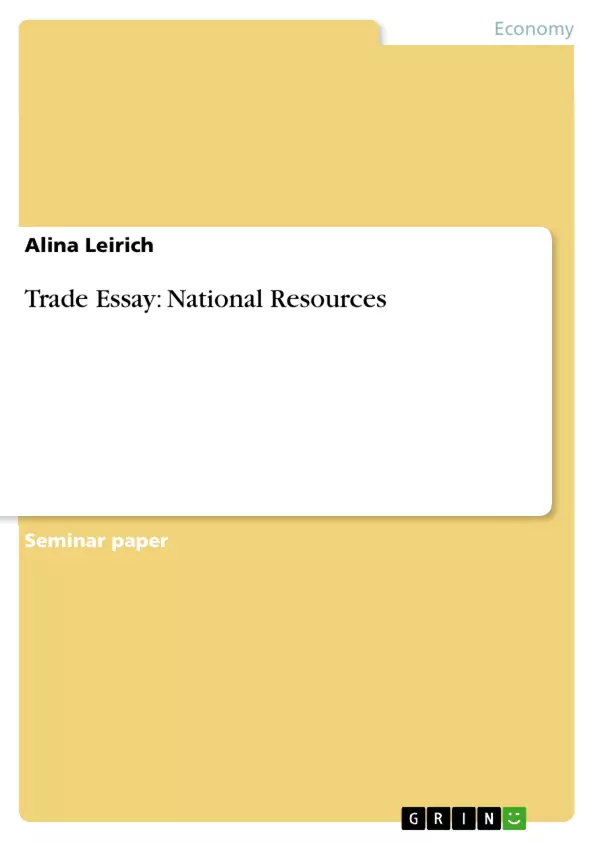Diese englische Hausarbeit untersucht die Entwicklung des weltweiten Handels des Rohstoffs Zink sowie die Preisentwicklung und mögliche Ursachen von Preisschwankungen
Inhaltsverzeichnis (Table of Contents)
- Introduction
- Problem definition
- Structure
- Zinc world trade
- Introduction to Zinc
- World Zinc Production
- Trade situation
- Globally
- Zinc trade in China
- Zinc price development
- Trade barriers for zinc
- Evidence for trade barriers
- Introduced trade barriers
- Effectiveness
- Conclusion
Zielsetzung und Themenschwerpunkte (Objectives and Key Themes)
This paper analyzes the international trade of zinc, focusing on the role of trade barriers and their impact on global zinc markets. The paper aims to understand the significance of zinc in global trade, the dynamics of zinc production and consumption, and the implications of trade barriers on the zinc market.
- The importance of zinc in global trade
- Trends in global zinc production and consumption
- The impact of trade barriers on zinc trade
- The role of China in the global zinc market
- The influence of trade policies on zinc prices
Zusammenfassung der Kapitel (Chapter Summaries)
The paper begins with an introduction that defines the research problem and outlines the paper's structure. Chapter 2 delves into the global zinc trade, discussing its significance, production, and trade patterns. The chapter examines the global zinc trade situation, particularly focusing on China's role in the market. Chapter 3 focuses on trade barriers affecting zinc trade, exploring evidence for their existence, the introduction of new barriers, and their effectiveness. This chapter is crucial for understanding the challenges and complexities of the global zinc market. The paper concludes with a summary of the findings and their implications. The conclusion is not included in this preview.
Schlüsselwörter (Keywords)
This paper focuses on key topics including international trade, zinc, global markets, trade barriers, trade policy, China, and commodity prices. The analysis explores the impact of trade policies on zinc production, consumption, and pricing.
- Quote paper
- Alina Leirich (Author), 2012, Trade Essay: National Resources, Munich, GRIN Verlag, https://www.hausarbeiten.de/document/204796


